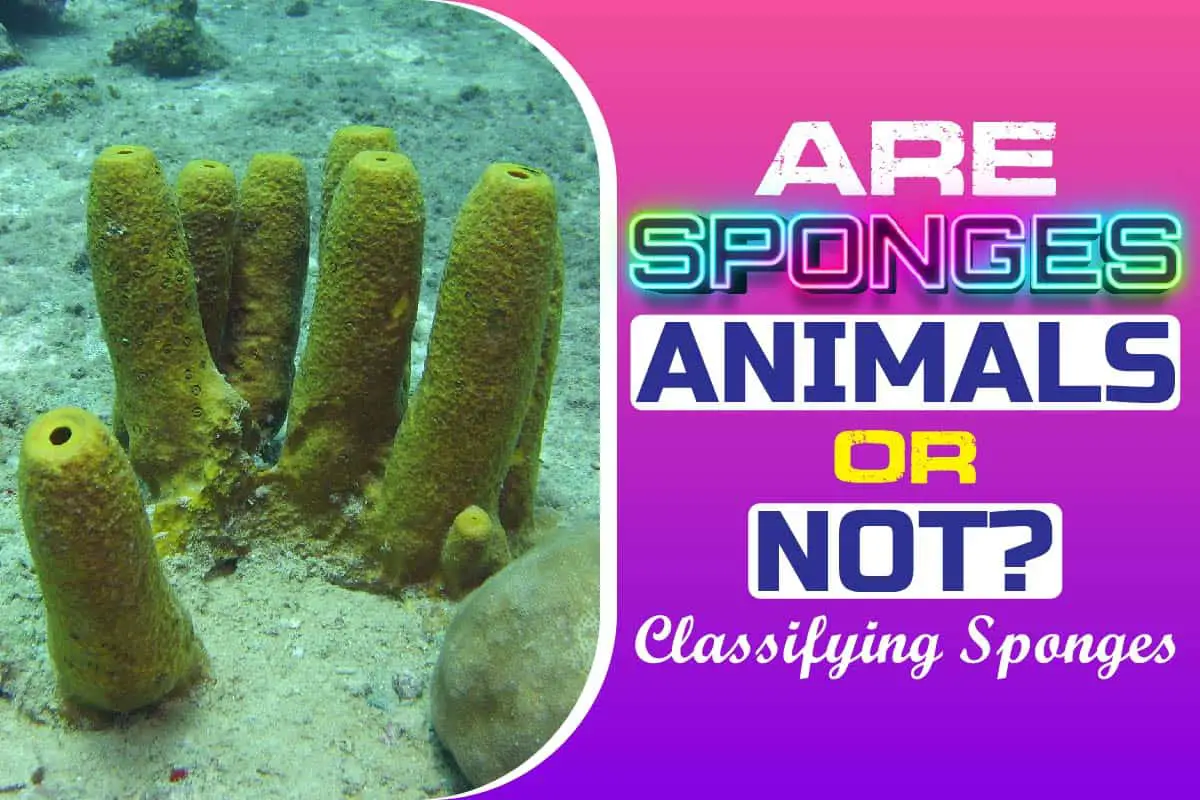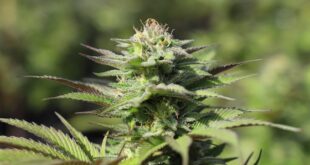Do you use sea sponges for the kitchen? Ever wondered what type of organism they are?
Whether sea sponges are animals or not is a common query. Sea sponges have eukaryotic structures and sessile bodies. They are often confused as aquatic plants or inanimate sea objects. Even scientists took a long time to conduct its identification.
In this article, we uncover the true identity of sponges and provide scientific explanations behind it.
So, are sponges animals? Yes, sponges are animals. They belong to the kingdom “Animalia” and have almost all the characteristics of an animal. The characteristics might not be quite evident. But upon some research, it will be observed that a sponge is actually a primitive type of animal.
Factors That Identify Sponges As Animals
Every organism has many integral parts in its body and functions to perform in order to survive. Combining these two key elements, here are some factors that specify sponges as animals.
1. Scientific Classification
Let’s begin with the most evident factor – the systematic classification of an organism based on its characteristics. In biological terms, this classification is simply known as taxonomy. So, if you take a look at the detailed taxonomy of sponges from Kingdom to Species, you can directly identify them as animals.
In taxonomy, the unit “Kingdom” directly sets out an organism as either plant or animal. Sponges belong to the kingdom “Animalia” and phylum “Porifera.”
The reason why sponges are categorized into phylum “Porifera” is that their body surface contains numerous pores. All organisms having this characteristic belong to this phylum and none of them belong to the plant kingdom.
Because of their sessile bodies and primitive structures, sponges were difficult to classify. In the past, they were classified as “Algae,” belonging to the kingdom “Protista.”
However, this status was later updated in the year 1857 by British zoologist Robert Grant. Before that, scientists had failed to identify the true nature of sponges and similar creatures.
Every discovered organism on earth has been scientifically classified based on its distinct features. Since sponges are a part of the animal kingdom, they have features of animals. You will be able to infer it clearly from the next factors.
2. Coordination
Whether sponges are animals or plants is not the only debate regarding them. Often, they are not considered living organisms at all. Their immobility and lack of proper coordination give rise to this debate.
But in reality, sponges do perform different types of coordinated activities. We all know that; the nervous system executes the coordination process. But sponges neither have developed neurons nor any other form of nervous tissue.
Now you may ask, how does a sponge perform coordination without the presence of nervous tissue in its body?
Although sponges do not have neurons or their particles, they have protein-made ion channels which help electro-transmitters (ions) to pass through the cell membrane. Since a sponge doesn’t have a separate system to conduct the transfer of neurotransmitters, it usually responds through its entire body.
The most common coordination response of a sponge is contracting the flat cells located on the exterior of its body. These cells are known as pinacocytes.
Sponges usually react most when they are attacked or provoked. Besides, when a foreign neurotransmitter comes in contact with a sponge’s body, it reacts to it. Conjoined sponges are also found to form special bonds of coordination.
3. Carbon Intake
Both aquatic animals and plants consume carbon from nature. However, the sources that cater to them and the processes they follow are completely different.
Firstly, plants intake carbon in an inorganic way, mostly in the form of carbon-di-oxide. Animals, on the other hand, absorb organic carbon directly from secondary sources (plants and animals).
Both aquatic and terrestrial plants fixate carbon in the form of carbon-di-oxide through the process of photosynthesis. Since animals cannot perform photosynthesis, their carbon intake comes from other organisms in the form of proteins and carbohydrates.
For sponges, the main sources of carbon are aquatic plants. During the daytime, aquatic plants use sunlight to perform photosynthesis and obtain carbon.
When sponges consume these aquatic plants, this carbon is transferred to their bodies in the form of protein. Here, the carbon dissolved in the water (in the form of carbon-di-oxide) is the primary source, and the aquatic plant is the secondary source.
Sponges are consumers and not producers. This phenomenon serves as proof of their identity as animals.
4. Reproduction
Both plants and sponges produce in two ways – sexually and asexually. However, there are some major differences between the sexual reproduction of plants and sponges.
Plants that are capable of performing sexual reproduction are known as flowering plants. The sexual reproduction of these plants is known as pollination, and during the process, they produce pollen grains.
On the other hand, most sponges (except for a few) capable of sexual reproduction are hermaphrodites, which means that they can function as both male and female sexes simultaneously. During reproduction, these sponges produce sperms.
Another difference between sexually reproductive plants and sponges is the presence of reproductive organs. For flowering plants, the male reproductive organ is called the stamen, and the female reproductive organ is called the pistil.
But sponges do not have a specified reproductive organ. Instead, two types of cells – choanocytes and amoebocytes help to produce the sperm.
Again, although the asexual reproduction of plants and sponges are similar, plants have pollinators (other animals, wind, etc.). However, sponges do not have any form of carriers assisting them in the process because the process is completely internal.
5. Food & Excretion
Since sponges have a primitive structure with no separate digestive or excretory system, all these mechanisms are done by the cells located on its body. On the other hand, plants do not have distinct excretory organs either. As for the digestive system, it is completely absent in them.
Sponges consume food with the help of the water passing through their bodies. Different sizes of food particles are consumed by different cells based on their positioning.
Comparatively large sizes of food particles get digested through internal cells—Choanocyte cells in the sponge intake the most portion of the nutrients.
With the help of enzymes, sponge cells amoebocytes and choanocytes help to digest the food consumed by sponges. We have earlier mentioned that plants are producers and animals (including sponges) are consumers.
Plants use their produced energy for regular mechanisms and food as derivatives for protein and fat. As for excretion, gaseous release occurs in plants through the stomata of leaves.
Simply speaking, in plants, holophytic nutrition is observed. And in sponges and all other animals, holozoic nutrition is observed.
6. Movement
When it comes to locomotion, plants and sponges are quite similar. They are both sessile, which means that they remain fixed in one place. This similarity is the main reason why sponges are often misunderstood as aquatic plants.
The sponges become unable to move from one region to another when they reach adulthood. They fixate themselves to a substratum. In most cases, this substratum is a rock. Besides, sea beds and coral reefs are common forms of substratum as well.
When the sponges are still in their embryonic stage, they move freely in the form of larvae. However, this is an extremely short-lived state. Sometimes, adult sponges perform extremely slow movements. Contraction and expansion of bodies is another form of sponge movement.
Plants, on the other hand, are completely sessile with no form of movement; this is yet another fact that confirms the identity of sponges as animals.
7. Cell Structure
Finally, the cell structure of a sponge is completely different from that of a plant’s cell structure. Although it is not well-developed, it is distinct enough.
All plant cells possess cell walls and vacuole. But, both of these components are absent from a sponge. Sponges do not have a cell wall. The vacuoles present in sponges are very tiny compared to that of a plant cell wall.
They both do have the cell membrane present in them. Another thing you will find absent in sponges is the chloroplast. Plants get their green color for the presence of this particle. Chloroplast also causes plants to produce their own food.
Furthermore, there are some cells in sponges that are only present in organisms of the animal kingdom. Some of the noteworthy cells are amoebocytes, gland cells, etc. You will not find them in any plant.
Conclusion
So, how exactly are sponges animals? If you have read our article, you already know the answer. We have given you the right answer and provided a thorough justification for our reasoning. All the information presented to you are either direct scientific facts or deductions drawn from them.
We hope that our research was helpful and we could successfully respond to your query. Best of luck!
You May Like These Articles As Well:
 Being Human
Being Human





